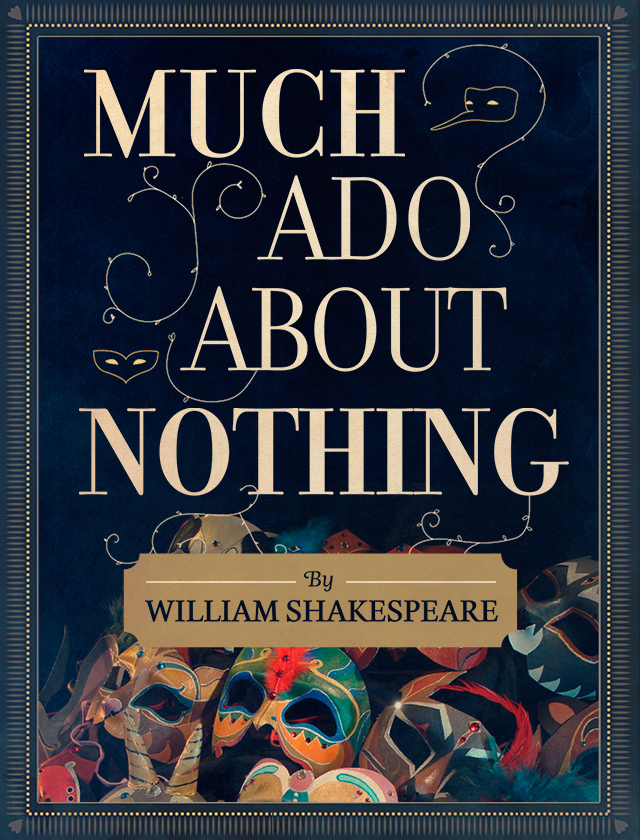Much Ado About Nothing
by William Shakespeare
Introduction
Probably composed between 1598 and 1599, toward the middle of William Shakespeare’s career, Much Ado About Nothing is one of his most popular and frequently performed plays. It combines humor with more serious considerations about court life, familial relationships, social mores, and gender dynamics. Although some of the play’s plot is likely borrowed from the sixteenth-century Italian writer Matteo Bandello, Much Ado is unmistakably marked by Shakespeare’s own inventiveness and originality. The adversarial dynamic between Beatrice and Benedick, which thinly veils their attraction to one another, has been especially appealing to audiences ever since the play was first performed. Much Ado About Nothing has been adapted several times for stage and screen. Notable film adaptations include the acclaimed 1993 version directed by and starring Kenneth Branagh, and Joss Whedon’s modernized adaptation released in June 2013.
The plot of the play centers around two sets of lovers: Claudio and Hero, and Beatrice and Benedick. Much of the play’s beloved rapid-fire wit occurs in the dialogues between Beatrice and Benedick, both of whom roundly reject the very idea of matrimony—that is, until they are tricked into falling in love with one another. Claudio and Hero, the less worldly pair of lovers, are the couple around whom the plot takes its nearly tragic turn when Claudio is tricked by the resentful illegitimate brother of Prince Don Pedro into believing that Hero has been with another man.
Much Ado differs significantly from the Bandello stories from which it borrows in that it treats Claudio’s rejection of Hero in a much darker way, and may even be seen as an open critique of the repressive strictures imposed upon Elizabethan women regarding their sexual lives. Claudio’s deliberately public accusation and rejection of Hero, which nearly leads to her death, suddenly upends the comedy of the play and transforms it into painful tragedy. Beatrice’s reaction to her cousin’s...
Sign up to continue reading Introduction >